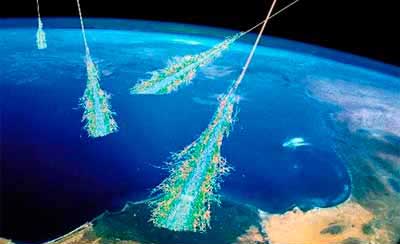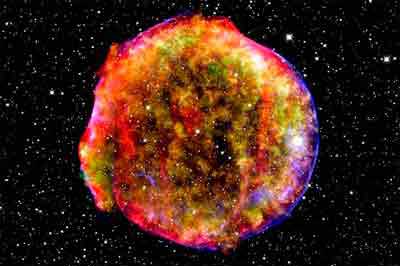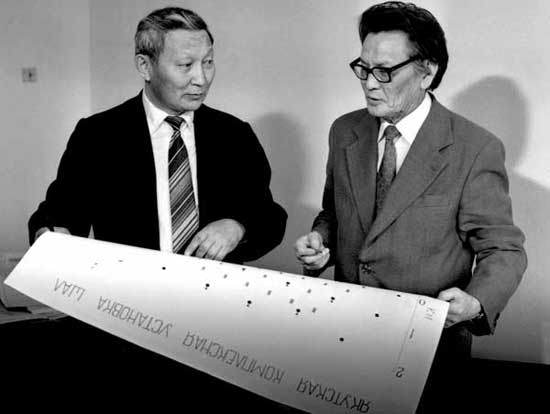Astrophysics of cosmic rays
Cosmic rays, as a physical phenomenon, were discovered about a hundred years ago, in 1912. The somewhat unusual term “cosmic rays” was the result of the fact that at that time and many years later their nature was unclear. Then it was only known that cosmic rays are streams of penetrating radiation coming from space and producing ionization in the atmosphere. It is cosmic rays that create the radiation background, the level of which increases with height, so that at an altitude of 10 km from sea level, it is about 10 times higher than at the Earth’s surface.
At present, the nature of cosmic rays is well studied. It has been established that they represent flows of nuclei of chemical elements. The composition of cosmic rays is similar to the chemical composition of the matter of the Universe: hydrogen is the predominant element (about 90%); helium (8%); nuclei of heavier elements (2%). One of the main characteristics of cosmic rays is their energy spectrum, or the dependence of the flux on energy. It is represented by a wide energy range: from 103 to 1020 eV (1 eV = 1.6 10-12 erg). For comparison, charged particle accelerators – the most complex, bulky and expensive devices – are capable of accelerating particles only up to energies of 1012 eV.
There are a number of aspects in studying the properties of cosmic rays. Among them, with a certain degree of conventionality, two main ones can be distinguished: nuclear physics and astrophysics. The first is connected with the study of the fundamental properties of matter, the study of the properties of “bricks” – elementary particles from which the material world is built. The astrophysical direction in the study of cosmic rays has as its main goal the explanation of their origin, that is, the search for astrophysical objects in which the spectrum of cosmic rays is generated, as well as the elucidation of the processes that lead to the formation of this spectrum.

The search for objects that are sources of cosmic rays has been ongoing since their discovery. To solve this urgent problem, there is no need to test each of the stars in the Galaxy. Such a path is unpromising – there are more than a hundred billion stars in it. At the same time, a number of very important requirements are well known that must be met by cosmic ray sources. The main one is energy. The fact is that the total energy content of cosmic rays and the average time of their stay in the Galaxy, after which they exit into intergalactic space, are known from the experiment. This makes it possible to calculate the required energy release, which the cosmic ray sources should have. The energy requirement defined in this way turns out to be so stringent that only objects with the highest energy release satisfy it. Such in the Galaxy are bursts of supernovae.
To an outside observer, a supernova explosion appears as the appearance of a new star in the sky. Its brightness is tens of billions of times greater than the brightness of an ordinary star, such as the Sun. Initially, it was assumed that a supernova explosion is the birth of a new star. In reality, this process is an explosion relative to the old star, as a result of which it ceases to exist. The physics of the processes leading to a supernova explosion is very interesting in itself. However, in reference to the problem of the origin of cosmic rays, the main thing is the value of the energy released during the explosion, which in a typical case is 1051 erg. Such energy is emitted by the Sun or another similar star in 10 billion years. In our star system – the Galaxy – one supernova erupts on average every 30 years. Their total energy release is quite enough to fill the Galaxy with cosmic rays with the observed intensity. This fact has been known to astrophysicists since the 1930s. Since then, supernovae have been the main candidate for the role of cosmic ray sources.

The search for a suitable physical process (mechanism) for the acceleration of cosmic rays has been intensively pursued by many researchers for several decades. A decisive success in solving this problem was achieved at the Shafer Institute of Cosmophysical Research and Aeronomy, Siberion Branch, Russian Academy of Sciences (SHICRA): in the 70s of the last century, an effective mechanism for accelerating cosmic rays by shock waves was discovered (Krymsky G.F. 1977, Proceedings of the USSR Academy of Science, vol. 234. p. 1306), which, as it became clearly in the future, effectively acts in the remnants of supernovae, generating a population of cosmic rays due to the energy of the expanding shell. In the next two decades, the efforts of researchers in many countries were directed to studying the properties of this mechanism, to creating a comprehensive theory capable of making detailed predictions that could be tested experimentally. As it turned out in the course of research, accelerated particles accumulate a significant part of the energy of the system. Therefore, an appropriate theoretical description must take into account the nonlinear effects of the backlash of cosmic rays on the system, that is, on the structure and dynamics of the supernova remnant. A decisive step in this direction was also taken at SHICRA: in the early 1990s, a nonlinear theory of cosmic ray acceleration in supernova remnants was developed, algorithms were created and implemented for obtaining numerical solutions of the corresponding system of nonlinear equations (E.G. Berezhko, V. K. Yolshin, L.T. Ksenofontov Cosmic ray acceleration in supernova remnants (Article published in JETP, PDF format).
The large remoteness of the studied objects from the observer (the nearest supernova remnants are located at distances of 100-1000 parsecs from the Earth) makes it impossible to carry out measurements in the object itself. This situation is typical for astrophysics. In this, as in other similar cases, the experimental verification of theoretical constructions consists in detecting the radiation generated by cosmic rays and comparing its properties with those theoretically predicted. Cosmic rays produce electromagnetic radiation in a wide range of wavelengths, from radio to gamma, inclusive. This radiation, which is commonly referred to as non-thermal, in its properties and mechanism of formation is significantly different from the thermal radiation emanating from any heated body, in particular, from stars. Of particular interest is the shortest wavelength part of the spectrum of nonthermal radiation—gamma radiation, whose photons have an energy of ~1012 eV and even higher. The fact of registration of such radiation from this or that object already speaks about the content in it of a large amount of cosmic rays with energies above 1013 eV, which in itself is valuable information. It should be noted that the possibility of detecting high-energy gamma radiation has appeared relatively recently thanks to complex detecting devices, called gamma-ray telescopes, created in a number of countries. Gamma-ray telescopes are narrowly focused instruments. Therefore, their use presupposes the early determination of specific objects that are most interesting for observation. The task of the theory developed at SHICRA is to identify potential sources of gamma radiation, as well as a detailed explanation of the properties of registered sources.
In the spectrum of cosmic rays, supernovae are represented by energies up to 1017 eV. At the same time, energy up to 1020 eV is recorded in the observed spectrum of cosmic rays. Although the origin of the most high-energy cosmic rays today can be much less certain, there is reason to believe that they are of extragalactic origin, i.e. they are produced in other galaxies. Further experimental and theoretical developments in this area will undoubtedly provide a more definite answer to this question in the near future. It should be noted that, due to the low intensity of ultrahigh-energy cosmic rays, their experimental study is possible only with the help of gigantic ground-based facilities. These are the so-called facilities for extensive air showers (EAS), which detect the secondary particles of the cascade generated by a cosmic ray particle in the atmosphere. The largest EAS installation in Russia belongs to SHICRA and is located in Yakutia near the village of Oktemtsy. Its detectors monitor an area of about 10 square kilometers. The existing ideas about ultrahigh-energy cosmic rays have been developed largely on the basis of painstaking research carried out at the Yakutsk EAS facility for more than 30 years. For scientific achievements obtained at the Yakutsk EAS facility, N.N. Efimov and D.D. Krasilnikov were awarded the Lenin Prize in 1982. The Yakutia’s EAS facility is still, in some of its parameters, a unique scientific instrument that solves urgent scientific problems.

Image of Tycho’s supernova remnant that erupted in 1572. The remainder is visible in all ranges of electromagnetic waves from radio to the gamma range inclusive. The remnant has the highest brightness in X-rays, which are produced by particles of cosmic rays born in the remnant.
Laureates of the Lenin Prize (1982) Nikodim Nikolevich Efimov (left) and Dmitry Danilovich Krasilnikov
